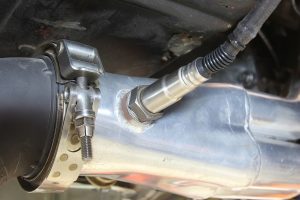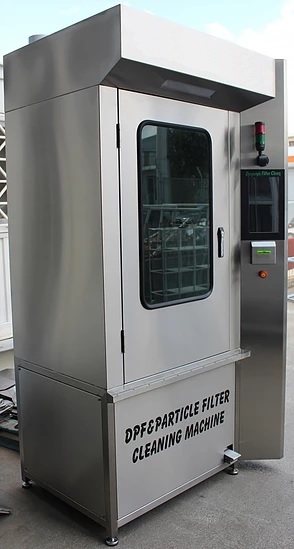WHAT IS OXYGEN SENSOR?
Oxygen sensor is placed before the catalytic converter, at the closest distance to the manifold. This sensor measures the waste mixture ratio in the exhaust gas. This ratio makes it possible to define the margin of the oxygen at the fuel – air mixture that is sent inside the engine to burn. According to the signal that the sensor sends depending on this oxygen margin, the ECU defines if the mixture is rich or lean. So it adjusts the opening intervals of the injectors. Mixture ratio is checked each second so ejection of the exhaust gases burned in maximum level and keeping the unburned gas level coming to the catalytic converter at the minimum is provided.
Oxygen Sensor 1
Zirconium dioxide (Zr02 – ceramic material) inside the sensor is coated with a platinum layer with very thin micro holes. The sensor, which is exposed to exhaust gas on the exterior and ventilated through the atmosphere at the interior, is connected to computer with a cable. These electrodes placing at different environments (exhaust gas electrode and external air electrode) generate voltage. The sensor, used only with unleaded gasoline, is actually a galvanic battery. Zr02 works as an electrolyte and electrolytes are made of platinum plates. Zr02 becomes electrically conductive when it reaches 300°C and it starts to pull the negatively loaded ions of the oxygen. These ions are gathered on the interior and exterior surfaces of the platinum. There is more oxygen in the air than in the exhaust gas. Therefore, the interior electrode’s keeping more ion than the exterior electrode affects the voltage potential.

Oxygen concentration in the exhaust gas defines the amount of ions at the outer electrode and the voltage consequently. The hole sizes depend on the heat. When the sensor temperature increases, the pores of the collecting material on the surface grow. The gases ionized inside the exhaust are passing through the enlarging pores and contact the exhaust gas electrode. While one of the sensor electrodes is contacting with the materials inside the exhaust gas, the other electrode generates voltage since it contacts with the external air and the surfaces of the electrodes are contacting with each other.
The generated voltage is always low and doesn’t exceed 1.3 volts (1300 mV). Typical operating range is between 100 – 900 mV. This amount is enough for the computer’s perception.
Oxygen Sensor 2
If the generated voltage is higher than 450 mV, the mixture is rich, and if lower the mixture is lean. According to these results, the ECU adjusts the injector opening intervals and it aims to reach the ideal mixing ratio. So the amount of raw gas discarded is minimized. The rest of the raw gases are sent to a second chemical burning process with the help of catalytic converter and the amount of raw gas to be discarded reaches almost zero. The data traffic between ECU and the oxygen sensor continues each second.
The Change in Voltage by Fuel – Air Ratio
If the sensor provides a low voltage level (lower than 200 mV), the ECU detects that the mixture is lean (λ >> 1) and increases the amount of fuel sprayed. If the sensor provides a high voltage level (higher than 800 mV), the ECU detects that the mixture is rich (λ << 1) and decreased the amount of fuel sprayed. Therefore, the oxygen sensor provides the spraying period to be in accordance with the engine’s oxygen coefficient that is continuously fluctuating between 0,80 and 1,20.



